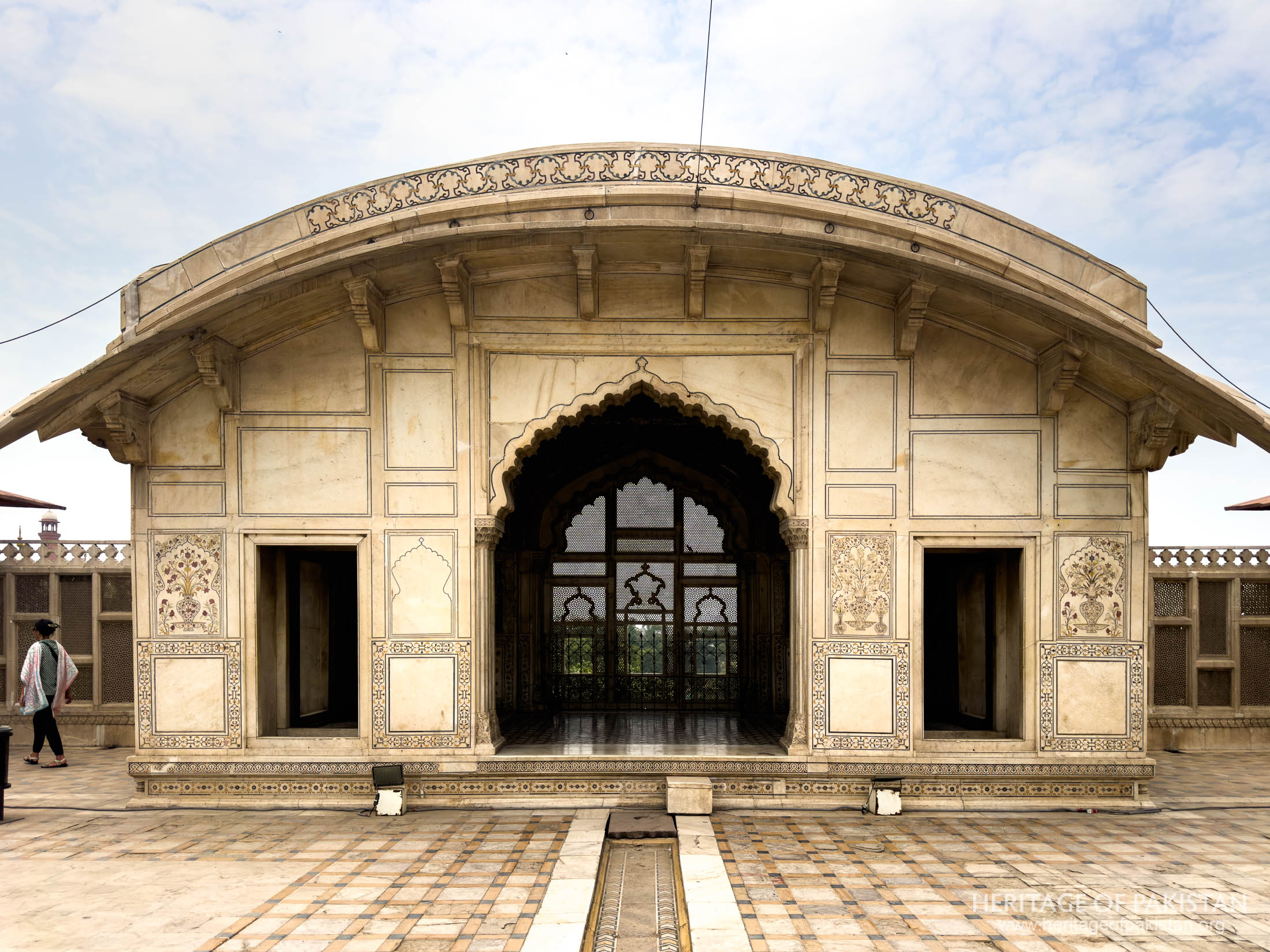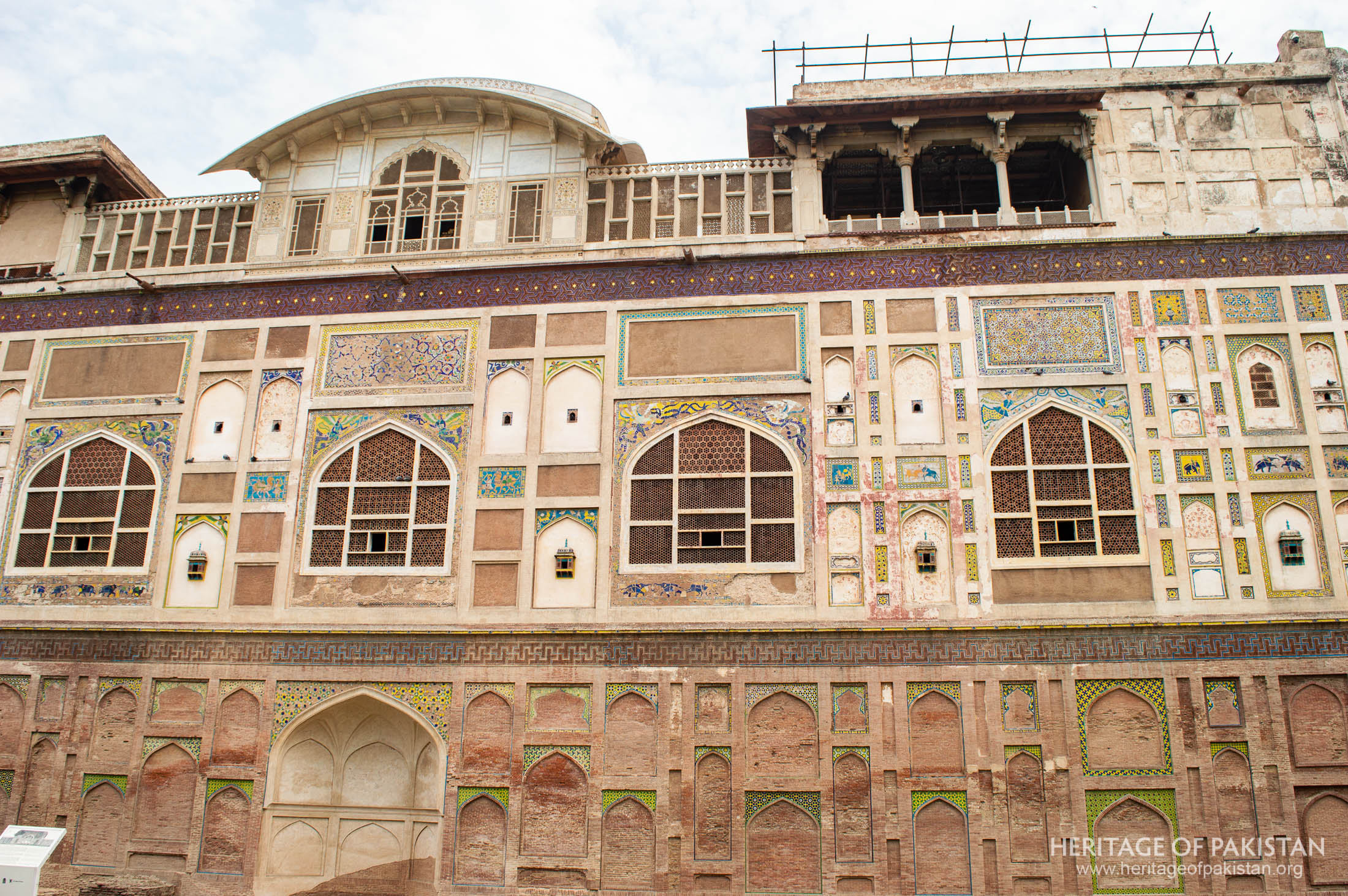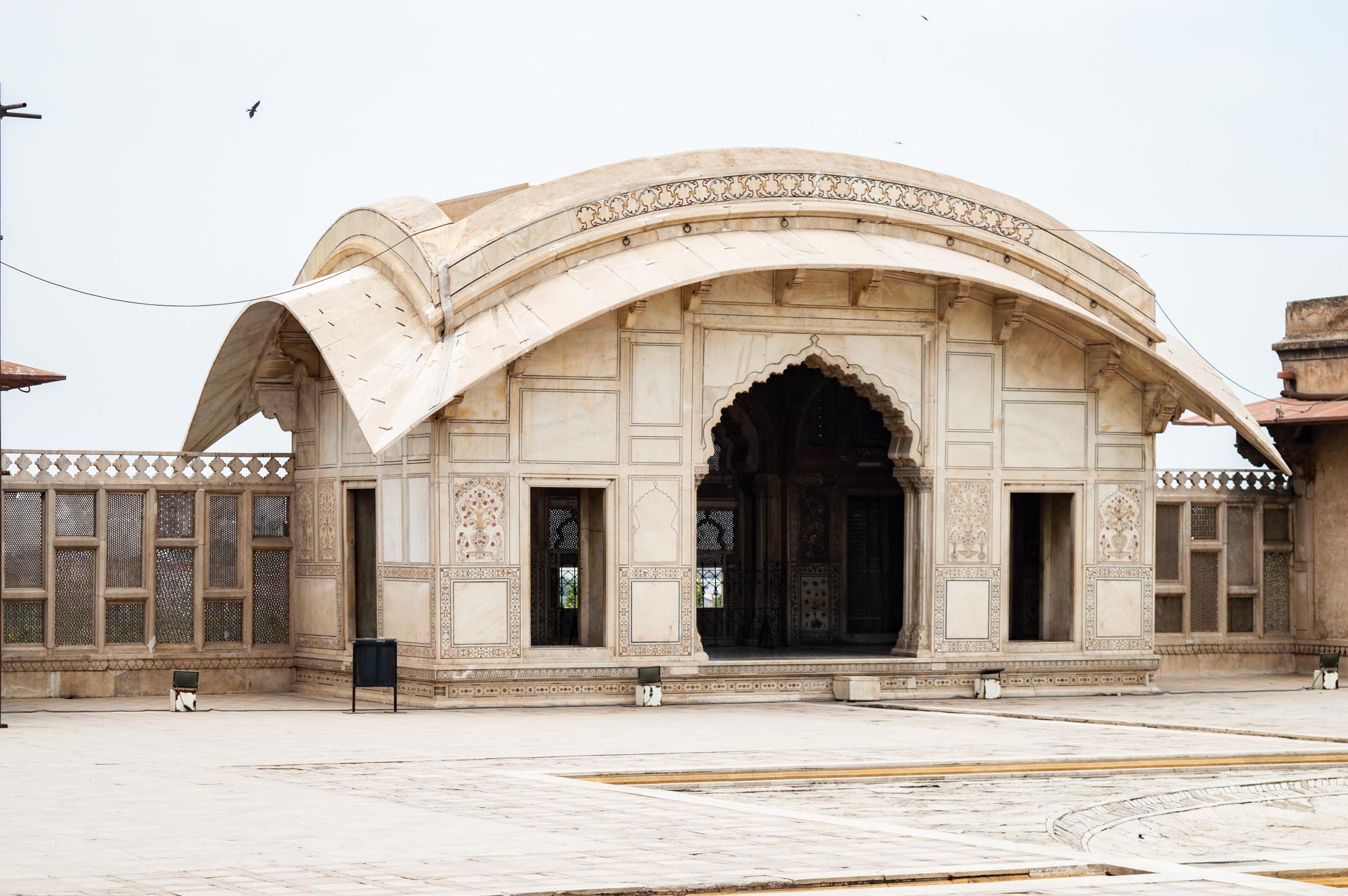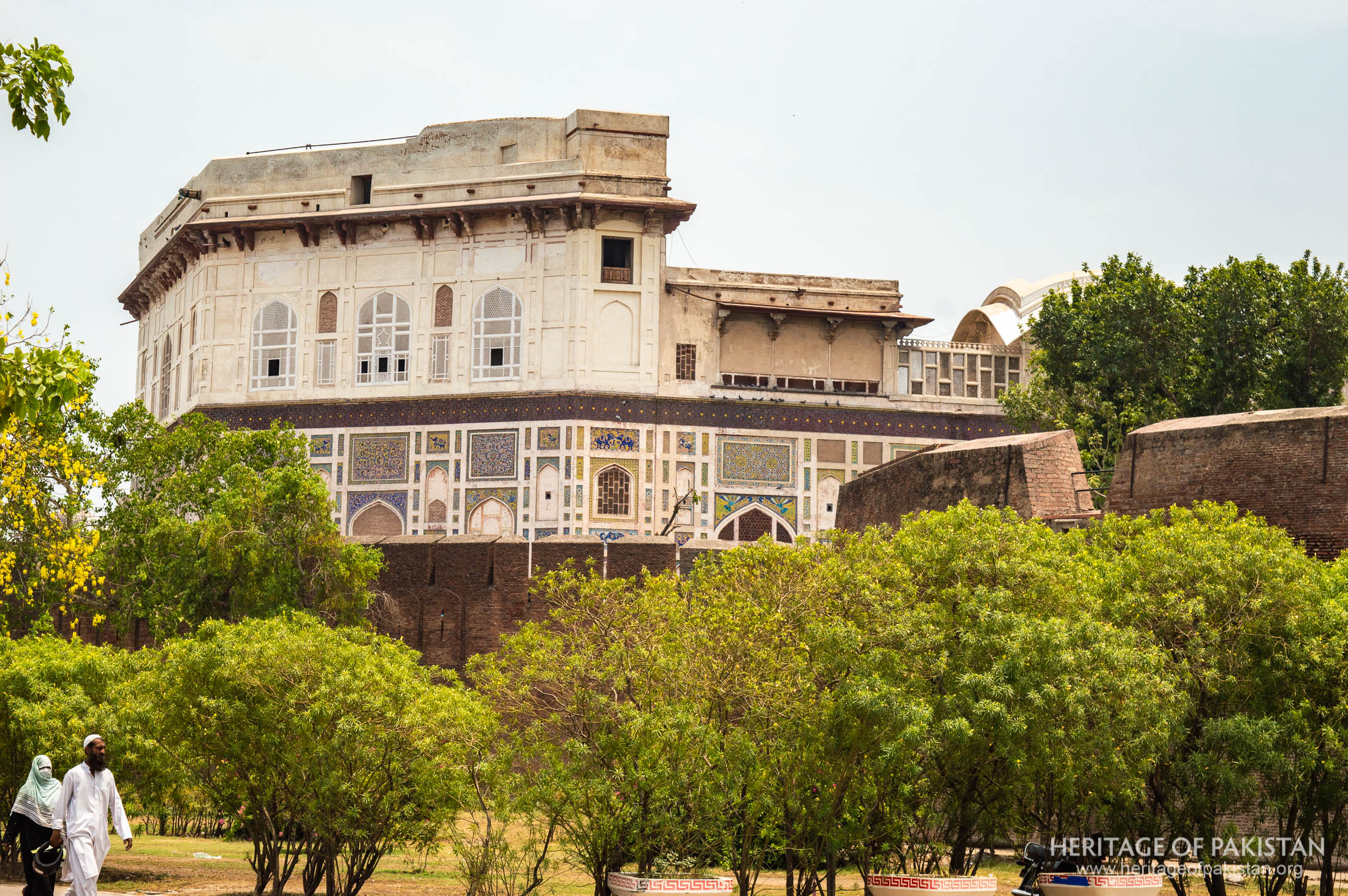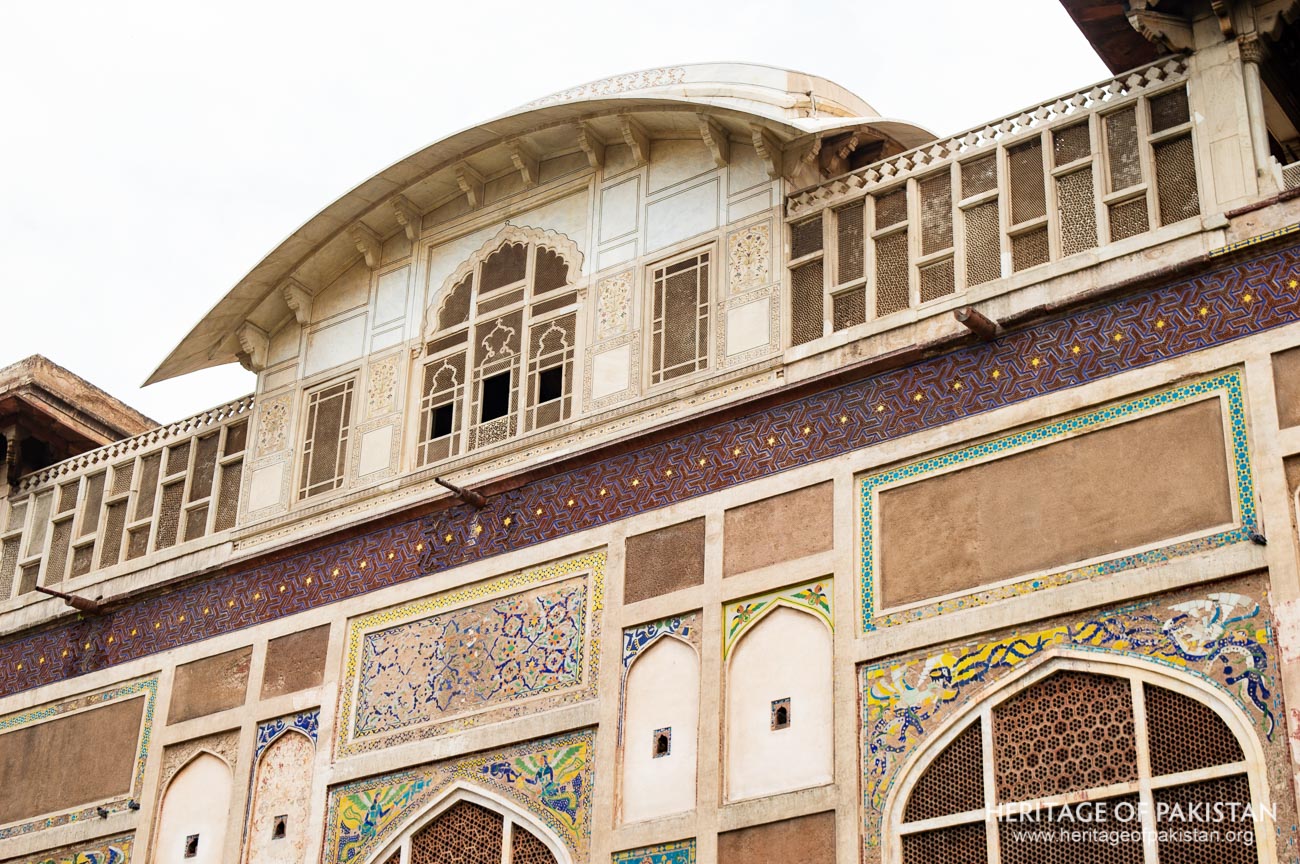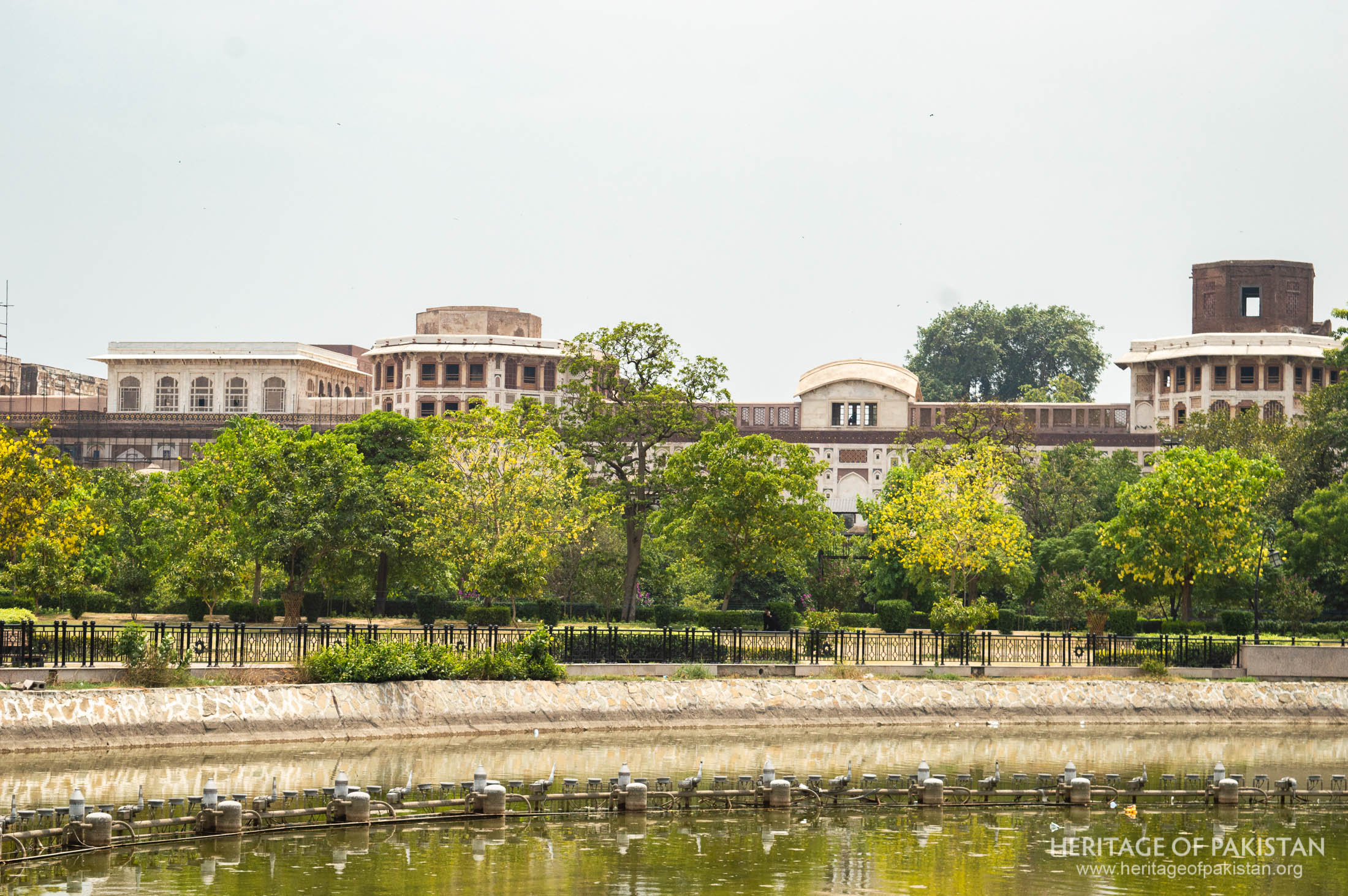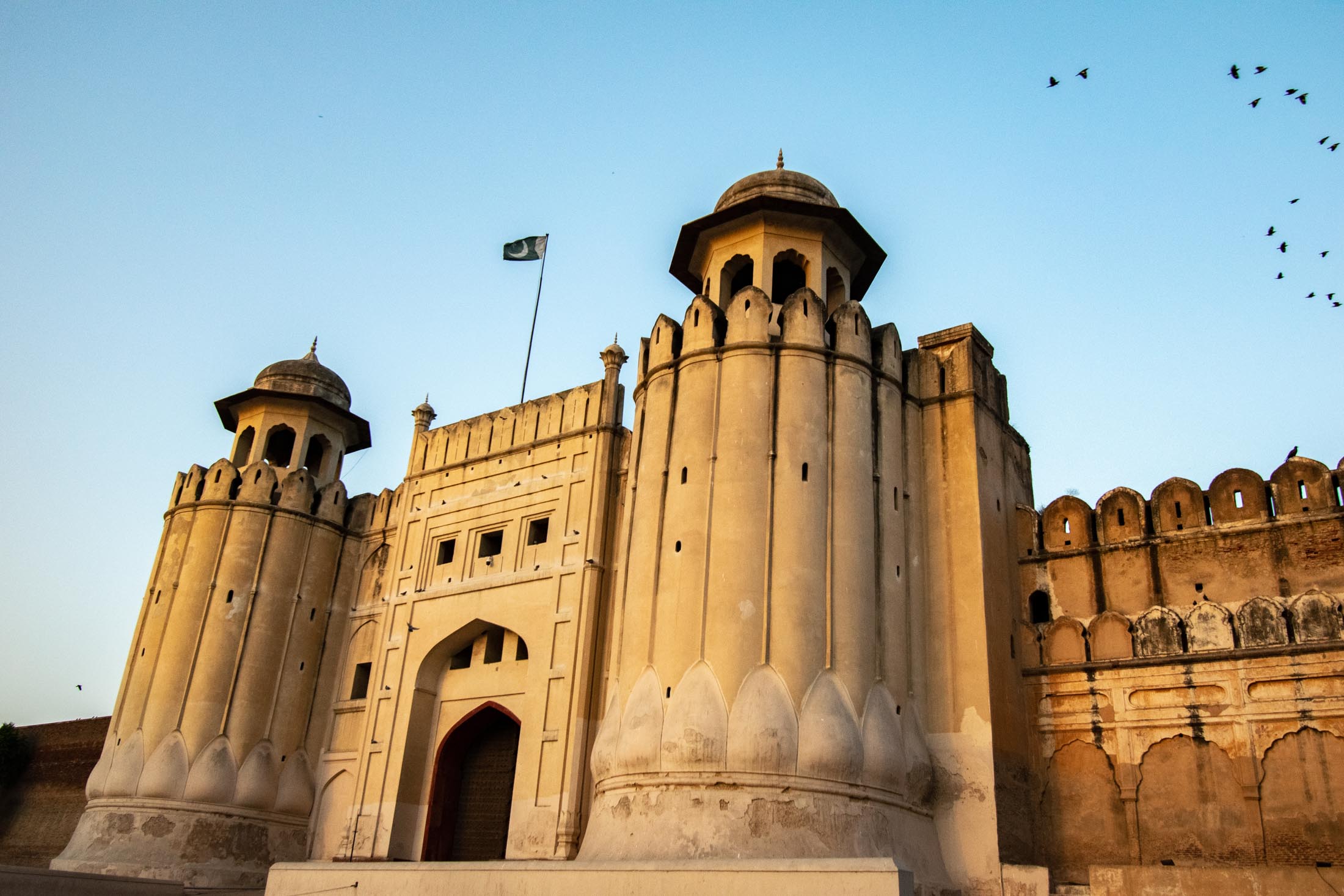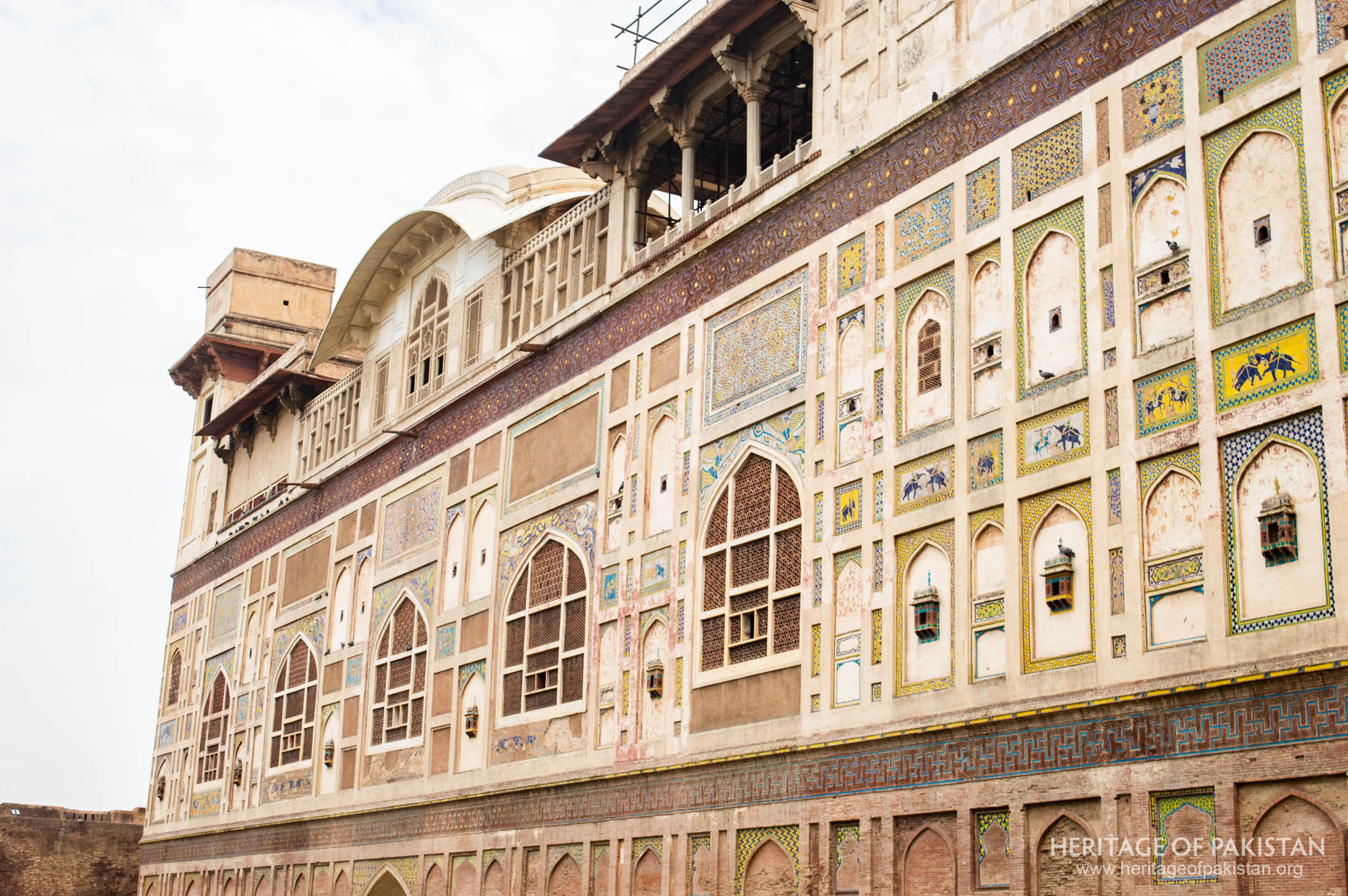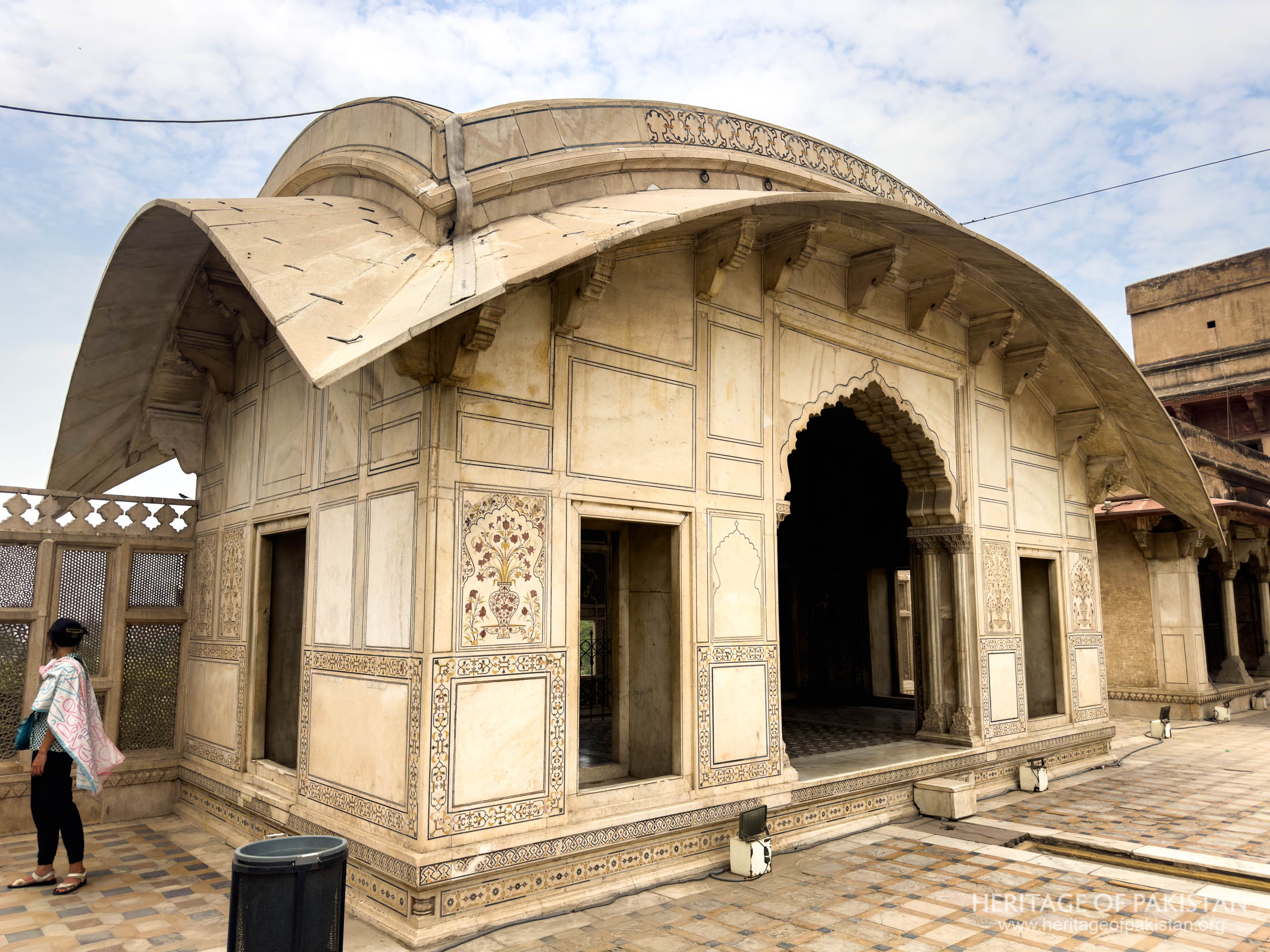Textarea
The Naulakha Pavilion is a prominent architectural feature situated within the Lahore Fort, located on the western side of the Sheesh Mahal court
Noted for its elegant form and aesthetic appeal, it stands as a representative example of Mughal architecture under the patronage of Emperor Shah Jahan
The origin of the name "Naulakha" has been traditionally attributed to the reported cost of its construction—nine lakhs (900,000) rupees
When viewed externally, the pavilion is visibly perched atop the iconic Picture Wall, contributing to the visual grandeur of the fort complex.
. The defining element of the pavilion is its curvilinear roof, which is supported by marble brackets and projects outward to form a ‘chajja’ or eave.
Historically, this section of the fort, including the Sheesh Mahal complex, was reserved for imperial use and functioned as a harem during the visits of Emperor Shah Jahan.
It is one of the most beautiful sections of Lahore Fort
The roof style of the Naulakha Pavilion is directly inspired by the indigenous architecture of Bengal, particularly the Jor Bangla temple form, which features curved roofs and arched openings.
The design of the Pakistan Embassy building in Washington, D.C., drew inspiration from the form of the pavilion.

